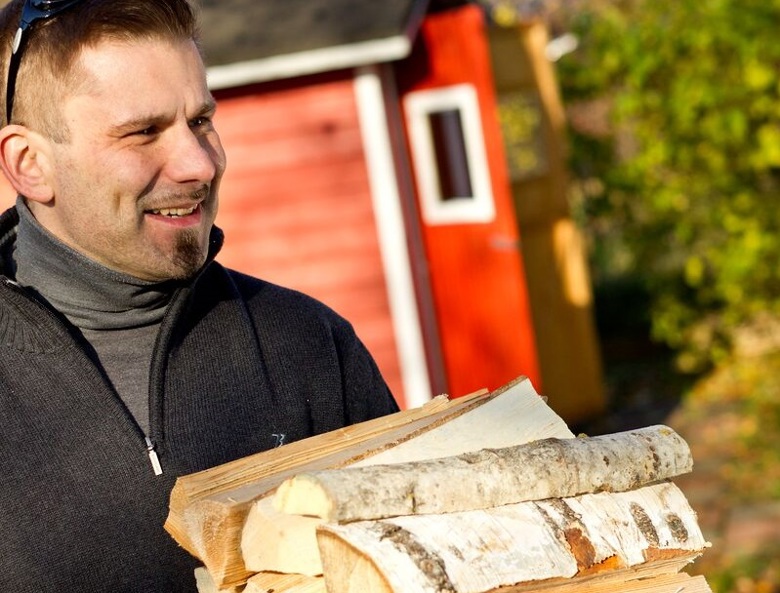Acquiring firewood

Many fireplace users wonder what kind of wood they should burn in order to maximize the benefit. The answer is “dry wood”. The quality of the firewood is more important than the wood species used.
The moisture content of firewood is more important than wood species
In addition to wood species, many other factors also affect the generation of heat. Rather than the species, the quality of the firewood, such as its moisture content, is more important. Moisture content is one of the most important factors affecting the calorific value of wood, on the one hand, and the amount of emissions, on the other. The more moisture there is in the firewood, the less heat it provides.
When damp wood is burned, the water must evaporate before the combustion produces thermal energy. In other words, the water consumes some of the energy generated during combustion, so the more water the wood contains, the less heat is produced.
The wood species is not very important in terms of emissions either. The burning of damp wood, on the other hand, clearly increases the amount of emissions that are harmful to health. More information on the impact of different wood species on emissions can be found on page 43 of the final report (In Finnish) of the University of Eastern Finland’s KIUAS project.
Mixed wood is well suited for use as firewood
Finnish wood species other than birch are also well suited for use as firewood. In fact, the preference for birch as firewood is a fairly new phenomenon.
Mixed wood, i.e. firewood that includes conifers and aspen, for example, can be obtained from firewood suppliers at a lower price than birch. In addition, small-diameter logs suitable for making firewood are obtained from all domestic wood species in connection with forest management. It is therefore a good thing if there is demand for wood species other than birch as well.
The calorific value of wood species varies little per kilogram of wood
The table below shows the calorific values of firewood at 20 per cent moisture content. The calorific value of wood indicates how efficiently it can be used in heating. The calorific value of different wood species per kilogram of wood varies only slightly. Pine reaches the same figure as birch.
Birch is the densest of the common types of firewood, so its calorific value by volume is the highest. This means that more birch can fit in the firebox in terms of energy content. The calorific value produced by dry birch per stacked cubic metre is about 1,700 kilowatt-hours. This amount corresponds to approximately 170 litres of light fuel oil in terms of energy.
Calorific values of firewood at 20 per cent moisture content
| Wood species | Calorific value kWh/kg | Amount of heat kWh/stacked m3 | Amount of heat kWh/loose m3 |
| Birch | 4,15 | 1700 | 1010 |
| Pine | 4,15 | 1360 | 810 |
| Spruce | 4,10 | 1320 | 790 |
| Alder | 4,05 | 1230 | 740 |
| Aspen | 4,00 | 1330 | 790 |
Source: Alakangas, Hurskainen, Laatikainen-Luntama & Korhonen 2016, 90, VTT; cited Pirinen 1997 (In Finnish).